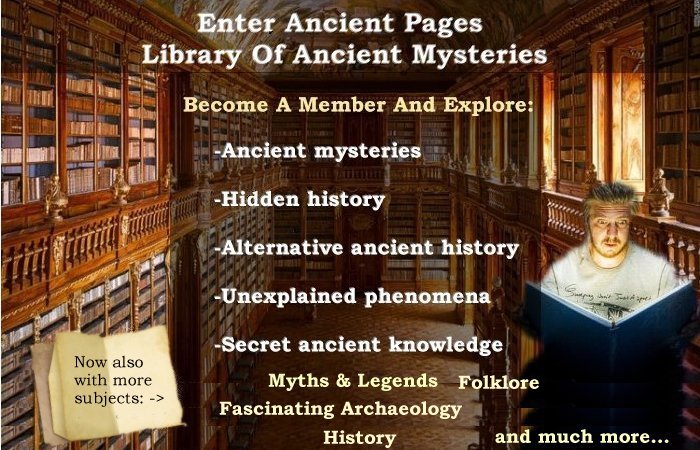Searching For Dilmun: Underwater Ruins In The Persian Gulf Predate The Pharaohs And Sumer
Ellen Lloyd– AncientPages.com – It’s difficult to say where we can find traces of the world’s oldest civilization because many ancient underwater ruins still await our discovery. There are many mysteries beneath the waters, and we have only unraveled a small percentage of them.
In the Sumerian creation myth Enki and Ninhursag, God Enki promised to create a marvelous land called Dilmun where life could thrive.
“For Dilmun, the land of my lady’s heart, I will create long waterways, rivers and canals, whereby water will flow to quench the thirst of all beings and bring abundance to all that lives.”
“Most scholars agree the ancient Sumerians were the earliest developed civilization in our recorded history. Mesopotamia is therefore often characterized as the cradle of civilization.” 1
This doesn’t necessarily mean that Sumerians were the oldest civilization. There is archaeological evidence that advanced ancient civilizations existed long before the Sumerians. The Indus Valley civilization, also called the Harappan civilization, was one of the world’s largest and oldest civilizations, and it's very possible they predate the Pharaohs and Sumerians.
Scientist Jeffrey Rose from the Birmingham University has suggested that paleoenvironmental, archaeological, and genetic evidence from the Arabian Peninsula and southern Iran provide us with vital clues about some of the earliest civilizations that walked the Earth.
This is a preview of our premium article available only to members of Ancient Pages.
Become a member to read more - Click here
If you are already a member and have logged in to your account, you can access the article here
See also:
Mysterious Wise Pre-Flood Beings Who Gave Humans A Precious Gift – Did We Reject It?
More From Ancient Pages Library Of Ancient And Unexplained Mysteries
More From Ancient Pages
-
 Ostrich Eggshell Beads Were Social Currency For People Who Lived 33,000 Years Ago
Archaeology | Mar 12, 2020
Ostrich Eggshell Beads Were Social Currency For People Who Lived 33,000 Years Ago
Archaeology | Mar 12, 2020 -
 Height Differences Among Neolithic People Was Caused By Environmental Stress Not Genetics
DNA | Dec 13, 2023
Height Differences Among Neolithic People Was Caused By Environmental Stress Not Genetics
DNA | Dec 13, 2023 -
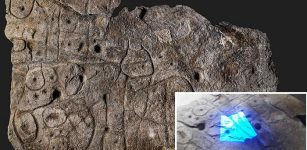 Large Bronze Age Stone May Be Europe’s Oldest 3D Map
Archaeology | Apr 8, 2021
Large Bronze Age Stone May Be Europe’s Oldest 3D Map
Archaeology | Apr 8, 2021 -
 Socrates: Great Philosopher And Brave Man Who Still Inspires Many People
Featured Stories | Jul 21, 2016
Socrates: Great Philosopher And Brave Man Who Still Inspires Many People
Featured Stories | Jul 21, 2016 -
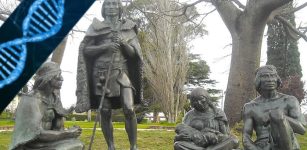 Ancient DNA Sheds Light On ‘Lost’ Indigenous People Of Uruguay And Reveals A Surprising Connection
Archaeology | May 11, 2022
Ancient DNA Sheds Light On ‘Lost’ Indigenous People Of Uruguay And Reveals A Surprising Connection
Archaeology | May 11, 2022 -
 Ancient Societies Ruled By Ruthless Dictators – Collapsed
Civilizations | Oct 18, 2020
Ancient Societies Ruled By Ruthless Dictators – Collapsed
Civilizations | Oct 18, 2020 -
 On This Day In History: He Wanted The Bible To Be Available To All – Burned At The Stake On Oct 6, 1536
News | Oct 6, 2016
On This Day In History: He Wanted The Bible To Be Available To All – Burned At The Stake On Oct 6, 1536
News | Oct 6, 2016 -
 Legend Of The Sun And Moon In Cherokee Beliefs
Featured Stories | Jul 9, 2019
Legend Of The Sun And Moon In Cherokee Beliefs
Featured Stories | Jul 9, 2019 -
 Yomi – Kingdom Of The Dead In Japan’s Native Shinto Religion
Featured Stories | Jun 7, 2021
Yomi – Kingdom Of The Dead In Japan’s Native Shinto Religion
Featured Stories | Jun 7, 2021 -
 Delphic Mysteries – Extraordinary Encounter At An Ancient Temple – Part 2
Ancient Mysteries | Apr 3, 2023
Delphic Mysteries – Extraordinary Encounter At An Ancient Temple – Part 2
Ancient Mysteries | Apr 3, 2023 -
 Extraordinary 5,000-Year-Old Astronomical Event Depicted On Indian Rock Carving
Archaeoastronomy | Jan 9, 2018
Extraordinary 5,000-Year-Old Astronomical Event Depicted On Indian Rock Carving
Archaeoastronomy | Jan 9, 2018 -
 Puzzling Ancient Artifacts And Skeleton Discovered In Iowa – Evidence Of A Lost Ancient Civilization?
Ancient Mysteries | Jun 16, 2018
Puzzling Ancient Artifacts And Skeleton Discovered In Iowa – Evidence Of A Lost Ancient Civilization?
Ancient Mysteries | Jun 16, 2018 -
 Ancient DNA Study Reveals Surprise About Britain’s Bronze Age – What Happened On The Orkney Islands?
DNA | Mar 31, 2022
Ancient DNA Study Reveals Surprise About Britain’s Bronze Age – What Happened On The Orkney Islands?
DNA | Mar 31, 2022 -
 Identity Of The Shining Ones – One Of The Greatest Secrets Ever Kept From Mankind
Ancient Mysteries | Aug 9, 2018
Identity Of The Shining Ones – One Of The Greatest Secrets Ever Kept From Mankind
Ancient Mysteries | Aug 9, 2018 -
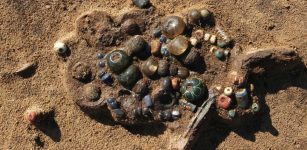 40 Elite Graves Of Men, Women And Children Unearthed On Danish Island Of Bornholm
Archaeology | Feb 3, 2017
40 Elite Graves Of Men, Women And Children Unearthed On Danish Island Of Bornholm
Archaeology | Feb 3, 2017 -
 Did Etruscans Solve The Mystery Of Synchronicity And The Secret Language Of The Stars?
Ancient Mysteries | Jul 5, 2018
Did Etruscans Solve The Mystery Of Synchronicity And The Secret Language Of The Stars?
Ancient Mysteries | Jul 5, 2018 -
 Water Storage Failure And Short-Lived Koh Ker Capital Of Khmer Empire
Archaeology | Nov 1, 2019
Water Storage Failure And Short-Lived Koh Ker Capital Of Khmer Empire
Archaeology | Nov 1, 2019 -
 On This Day In History: Alexander The Great Defeats Darius III Of Persia In The Battle Of The Granicus On May 22, 334 B.C.
News | May 22, 2016
On This Day In History: Alexander The Great Defeats Darius III Of Persia In The Battle Of The Granicus On May 22, 334 B.C.
News | May 22, 2016 -
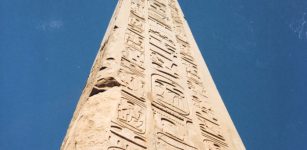 How On Earth Did The Ancient Egyptians Raise Their Colossal Obelisks?
Featured Stories | Feb 14, 2022
How On Earth Did The Ancient Egyptians Raise Their Colossal Obelisks?
Featured Stories | Feb 14, 2022 -
 Illapa: Powerful Master Of Clouds, Rain And Hail – Worshipped By Inca People
Featured Stories | Jul 7, 2016
Illapa: Powerful Master Of Clouds, Rain And Hail – Worshipped By Inca People
Featured Stories | Jul 7, 2016



